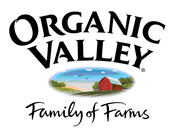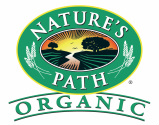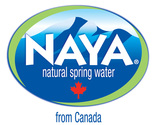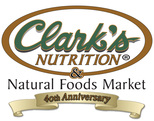|
|
|
|
CORN PRODUCTS AND DERIVATIVES LIST The following list of common food products and food additives is not exhaustive. Some products may not always be made from corn, but all products can be made from corn, or may contain corn as an ingredient. For example, dextrose, a corn derivative, is sometimes used as an anti-clumping agent in iodized salt. Pre-packaged, grated cheese often uses a form of corn starch or cellulose to prevent caking. Also, be aware of corn derivatives used in medicines like aspirin and cough syrup
Let’s review the usual suspects:
This list is not all inclusive of ingredients to avoid. Tip offs can be the generic use of ingredients without specifying their nature, for example: “natural” flavor, vegetable (which vegetable?), starch (which starch?), syrup, and so on. GM Microorganisms Taking the Place of Chemical Factories 10/3/12 6:19 AM
Oct 3, 2012|3:19 pm Additives, Vitamins, Amino Acids, Enzymes GM Microorganisms Taking the Place of Chemical Factories Ingredients and Additives Possible applications of GMOs Soy beans: Raw material for food an feeding GM-micororganisms procuding additives, vitamines, enzymes ans amino acids. Out of starch: Sugars and sugar substitutes The fact that microorganisms can produce food additives and other valuable substances is nothing new. Genetic engineering, however, has made it possible to modify bacteria and fungi to make them produce substances at an economic advantage to conventional, industrial methods. Additives, amino acids, vitamins, flavours, enzymes - countless substances used in food production are produced with the help of genetically modified microorganisms. In many ways, these biotechnological methods have replaced chemical, synthetic production. Biotechnological production of enzymes in fermenters. Photo: Novozymes Vitamin B2 Crystals under polarised light. Vitamin B2 is sometimes used in foodsasacolouring. Several facilities in Europe produce Vitamin B2 with GM microorganisms. Photo: DSM The advantages are obvious: microorganisms grow rapidly and in most cases are easy to cultivate. The fact that they "work" under normal conditions means that unlike conventional production methods, they don't need high temperatures, pressures, or harsh chemicals. Using microorganisms is much more environmentally friendly than conventional chemical-synthetic methods; they use less energy and use renewable resources. Production leftovers are easily biodegradable and have minimal impact on waste water. In order to biotechnologically produce a certain substance, microorganisms must be identified that produce the substance naturally. There are many known bacteria and fungi that produce valuable substances. Itwasn'tuntilgeneticengineeringcame about that these biological methods became economically viable. Targeted genetic manipulation has not only enhanced the productivity of these methods, it also has resulted in the production of substances that was impreviously impossible. Genetic engineering has dramatically expanded the potential of biotechnological methods. Genetically modified microorganisms are now not only used to Processed Foods Possible Applications of GMOs Overview Bread and Pastries Milk, Dairy Products, Cheese, Eggs Chocolate, Sweets, and Ice Cream Meats and Sausage Beverages: Juice, Wine, Beer, Soft Drinks Animal Feed Further Information EU: Opinion on Riboflavin as a colouring matter authorized for use in foodstuffs produced by fermentation using genetically modified bacillus subtilis (expressed on 10 december 1998) European Food Safety Authority (EFSA): Draft guidance document for the risk assessment of genetically modified microorganisms and their derived products intended for food and feed use http://www.gmo-compass.org/features/printversion.php?id=36 Page 1 of 3 GM Microorganisms Taking the Place of Chemical Factories 10/3/12 6:19 AM produce pharmaceuticals, vaccines, specialty chemicals, and feed additives, they also produce vitamins, additives, and processing agents for the food industry. Here are a few examples: Vitamin B2 (colouring, rivoflavin E 101), vitamin C (preservative, ascorbic acid E 300); Thickener, xanthan (E 415), acidity regulator, citric acid (E 330); Preservative, natamycin (E 235), nisin (E 234), lysozyme (E 1105); Various amino acids used to improve the quality of animal feed - also used in some foods, e.g. the flavour enhancer glutamate (E621), the sweetener aspartame (E 951) or the flour treating agent cysteine (E 921); Numerous enzymes used in cheeses, bread and baked goods, alcoholic beverages, and juice, as well as in the production of glucose syrup (corn syrup), glucose, and other starch products. Genetically modified microorganisms: Better yields, simple systems. Genetic engineering provides many ways of optimising methods for producing various substances including vitamins, enzymes, and amino acids. The production of a substance naturally found in a microorganism can be enhanced. The regulatory machinery controlling a gene can be changed for a stronger promoter. The enzyme coded by this gene can thus be produced in much greater quantities. The same effect can be acheived making sure that the desired substance is constantly produced. Microorganisms will usually stop producing a substance when enough is available. Genetic engineering can be used to deactivate this "stop signal". Some important substances are only produced naturally by microorganisms that are difficult to culture. In this case, the gene used by the microorganism to produce the substance of interest can be given to a different microorganism that is easier to grow. Even the nutritive medium used to grow bacteria and fungi is often made from GMOs. Certain proteins, starches, and sugars needed by microorganisms are produced from genetically modified soy or maize. Biotechnological production methods. The production of substances with the help of genetically modified microorganisms takes place in fermenters. These closed, stainless steel tanks are used to set up optimal conditions so that microorganisms can thrive and produce the desired product in large quantities. When the growth and production phase ends, the substance of interest is isolated and purified. No traces of microorganisms are present in the final product, and no microbial DNA is detectable. Safety. Legally specified saftey standards set purity http://www.gmo-compass.org/features/printversion.php?id=36 Page 2 of 3 GM Microorganisms Taking the Place of Chemical Factories 10/3/12 6:19 AM requirements for vitamins and additives. Whether they were produced chemically, biologically, or with GMOs is not a factor. The final product must always be chemically pure. All systems that use genetically modified microorganisms must be reported to governmental agencies. There are EU-wide laws governing the facilities and microorganisms used for genetic engineering as well as the safety and quality of the resulting products. Labelling. Additives that are produced with the help of genetically modified microorganisms do not require labelling beacuse GMOs are not directly associated with the final product. Because the final product is carefully purified and does not contain any genetically modified organisms, vitamins and additives made in this way are not subjected to special regulations or labelling requirements. In some cases, amino acids and enzymes are not legally considered foods. Rather, they are known as processing aids. This is why there is no legal requirement to declare these additives on the list of ingredients. See also on GMO-Compass: Made from starch: Sugars and sugar substitutes Cheese: Chymosin produced with GM microorganisms January 26, 2006 http://www.livecornfree.com/2010/04/ingredients-derived-from-corn-what-to.html
|
|







